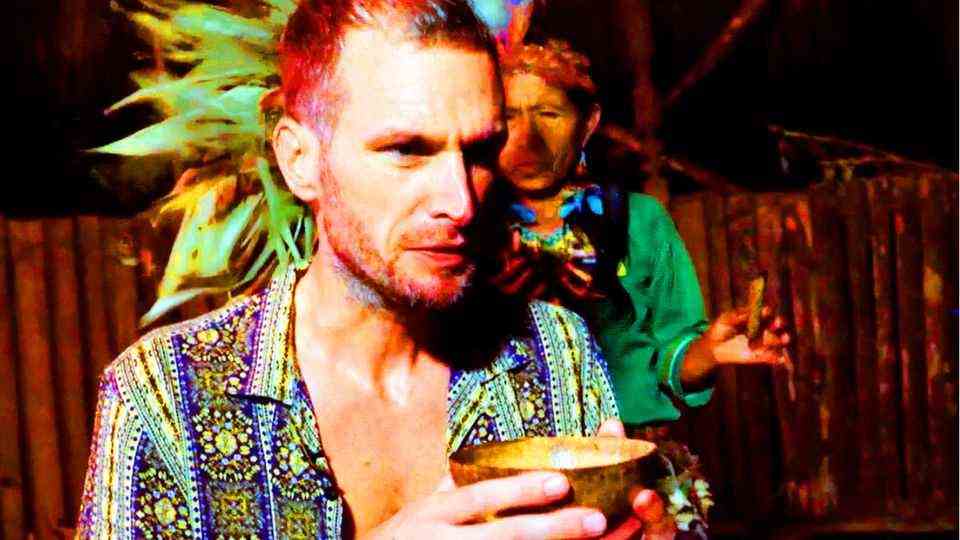Lawsuit against pharmaceutical industry
The Over-Overdose: Why the Drug Crisis in the US is Affecting Native Americans
Addiction to painkillers: More than 400 Native American tribes had sued the drug companies over the opioid crisis
© Steve Heap / Picture Alliance
Four pharmaceutical companies have agreed to a $590 million settlement in a class action lawsuit brought by Native Americans over rampant painkiller addiction. But the problem goes much deeper – and begins much earlier.
$590 million. That’s how much four drug companies — including Johnson & Johnson — are willing to pay to settle the lawsuit brought by more than 400 Native American tribes and organizations who have sued the companies over addictive painkillers. This emerges from recently published documents from the responsible court in Cleveland. According to a report by ABC News, the class action lawsuit represents 80 percent of all tribal people in the United States.
In addition to the drug manufacturer Johnson & Johnson, the three largest drug dealers in the country are to pay: AmerisourceBergen, Cardinal Health and McKesson. However, Johnson & Johnson clarified that its $150 million share of the settlement payment was not an admission of guilt. Regardless, the three distributors had already agreed to a $75 million settlement with the Cherokee Nation of Oklahoma in 2021.
Fight against rampant opioid addiction
Not only Native Americans, but also several states and local governments have been reclaiming billions of dollars from drug companies that they spent fighting opiate addiction and overdose.
The tribes are now to use the equivalent of around 525 million euros to combat the rampant opioid addiction in their communities. But the agreement won’t go into effect until 95 percent of the tribes that filed the lawsuit agree to the settlement, said Tara Sutton, an attorney whose law firm represents 28 tribes, according to ABC News. All members of the 574 state-recognized tribes are said to have a claim – regardless of whether they themselves had sued or not.
However, the funds should only be used for the treatment and prevention of addiction. “We’re not solving the opioid crisis with this settlement, but we’re providing tribal communities with important resources to deal with the crisis,” Steven Skikos, a leading tribal advocate, told the New York Times.
5.5 years lower life expectancy
There is a good reason why the Native Americans sued separately: According to a report by the New York Times, the number of deaths from opioid overdoses among Native Americans is twice as high as the national average. The US newspaper cites a study according to which pregnant Native American women were 8.7 times more likely to be diagnosed with opioid addiction than pregnant women of other ethnic groups.

But the US natives are not only the sad front-runners when it comes to the abuse of painkillers. According to a report by the American Addiction Center, no other ethnic group in the United States struggles so severely with drug addiction. This applies to alcohol, marijuana, cocaine, inhalant and hallucinogen use. In the 2018 National Survey on Drug Use and Health, one in four participants admitted to drinking “too much” in the past month. Native Americans make up 2.5 percent of all adult Americans seeking treatment for drug addiction — and they make up just 1 percent of the total population, according to one Study report from 2012. According to the American Addiction Centers, Native Americans “have a 5.5 year shorter life expectancy due to problems such as substance abuse, chronic illness and suicide.”
Isolation, lack of education, poverty
There are many reasons why a disproportionately large number of people in the US tribal communities struggle with drug or alcohol problems. “The history of the indigenous people (especially the last 300 years) is characterized by violence, oppression, displacement and the loss of self-determination,” says an article on the website “Red Road”, which claims to be committed to raising awareness of Indian culture .
In addition to this traumatic legacy, social isolation, a lack of education and high rates of incarceration reportedly fueled widespread drug abuse. Many reservations are also not sufficiently integrated into the state health system. According to Landmark Recovery, which operates several addiction clinics in the United States, 15 percent of Native Americans live below the poverty line. “The self-reinforcing cycle of crime, addiction and poverty is at play here and makes the problem even worse,” it said.
40 percent of the young indigenous people have already used illegal drugs
This downward spiral often begins at a young age, writes the National Institute on Drug Abuse, which is part of the US Department of Health and Human Services. A 2018 survey of high school students living on or near reservations found that Native American youth reported “substantially higher levels of alcohol, marijuana, cigarette and other illicit drug use.” According to the National Survey on Drug Use and Health, four out of ten Native American youth between the ages of 12 and 17 have used illegal drugs.
However, many tribal communities have limited access to addiction facilities and prevention services. That the $590 million settlement will turn the tide is at least questionable. Assuming each of the approximately 6.8 million Aboriginal people were included in the settlement, that would equate to a per capita payment of $74 per person for treatment and prevention of addiction, minus legal and litigation costs. “Every penny counts, so we’re going to take it and use it,” W. Ron Allen, chairman of Washington state’s Jamestown S’Klallam Tribe, which has 550 members, told ABC News.
sources: “ABC News“; “New York Times“; “American Addiction Centers“; “National Survey on Drug Use and Health 2018“; “thereredroad.org“; “National Institute on Drug Abuse“; “Landmark Recovery“; with material from the dpa news agency


